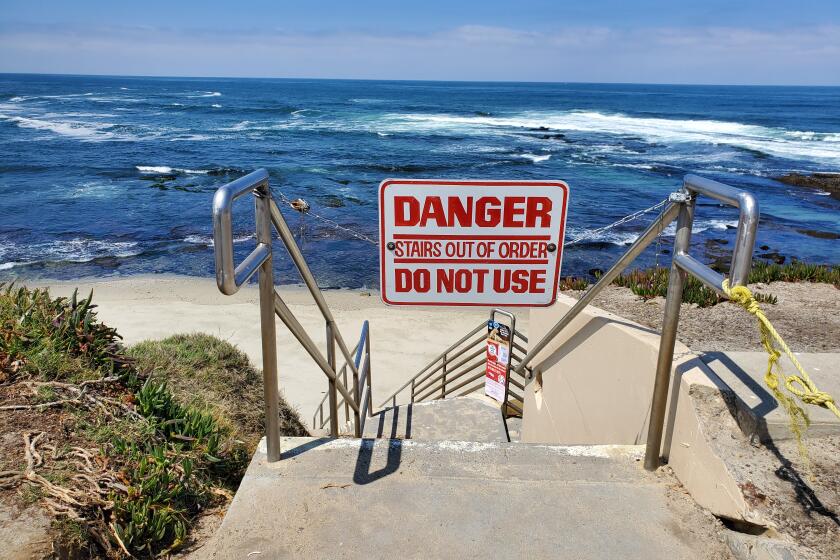La Jolla counselors offer insights on youth anxiety: Parents learn awareness and how to help
Discussions about anxiety in children and teens can be daunting. The very thought prompts a deep breath. Especially when you consider that 30 percent of children and teens present signs of anxiety, yet only about 25 percent of them get the help they need to cope with it.
But there is some good news; experts say there are behaviors parents can look for and steps they can take to help their children deal with anxiety and stress.
To that end, child and adolescent psychologist Katherine Nguyen Williams and clinical social worker and therapist Kelly McCullough came to La Jolla Library on Feb. 9 to discuss anxiety, how it presents in children and teens, why it manifests in this age group, and what parents can do to ease anxious situations. Both are on staff at Rady Children’s Hospital.
“Anxiety disorder is the most commonly presented problem that therapists, counselors and teachers see that impacts how a teen functions,” Williams said. She explained that there are different types of youth anxiety with various characteristics that separate them.
The most common types include Generalized Anxiety, which can be over a variety of things; Social Anxiety, which is based on social situations and associated with a fears of embarrassing oneself, being judged by others, etc.; Separation Anxiety, which is often seen in younger children who don’t want to be apart from their parents (not wanting to be alone at bedtime or not wanting to go to school); and others. Young people who have had panic attacks are often afraid of having another panic attack, and that fear often contributes to anxiety.
McCullough added: “Thirty percent of children experience anxiety, starting as young as age 6, which is hard to imagine. Anxiety drives us to avoid situations, which is adaptive. (In the past) anxiety helped us avoid predators and stay alive, which is healthy in such situations. But today, with stressors like homework, that’s not going to kill you, so that is maladaptive.”
Because children and teens are less able to communicate their anxiety than adults, their symptoms manifest in different ways.
“You might see avoidance (of certain situations); tantrums, crying, screaming; physical symptoms such as stomach pains, rapid heartbeat or heavy breathing,” McCullough. “If you are spending a lot of time comforting your child, it might be a sign they are anxious. Or if you’re feeling like family functions are being disrupted, as in the case of children not wanting to go to school, family parties or sleepovers.”
As to why children get anxious, McCullough added there is a genetic link; and children are more likely to develop anxiety if there are life stress events in school, neighborhoods or the home, including divorce.
“What I want to highlight is not every child who experiences a stressful event will develop severe or debilitating anxiety that necessitates treatment,” McCullough pointed out. But there are a lot of things parents can do to encourage resilience in their children, such as acknowledging fears and anxiety so children know it is normal, and also modeling anxiety-management behaviors.
As an example, Williams said she is afraid of cockroaches and remembers her children asking why. “Do they bite you?” they asked. “Do you they hurt you?” her daughter wondered. When Williams said no, she realized she was modeling a fear for her children.
“If my daughter sees me being scared of a cockroach, she could develop that fear of them. So I had to channel mindfulness so I didn’t model that anxiety for her,” Williams said. “You can model (anxiety management) by saying something like: ‘I’m nervous about something today, but I am going to do it anyway.’ You can say that out loud and make that normal.”
Other things parents can do at early levels include teaching their children relaxation training (deep breathing and tensing muscles and then releasing them); thought distraction exercises to replace one thought with another (run down the alphabet and name something in a category that starts with each letter); mindfulness activities; superhero visualization and imagining oneself defeating whatever the worry is; and gradual exposure to things that make one anxious.
“Anxiety drives us to avoid, and the more we avoid something, the more we are afraid of it,” McCullough said. “The more often we face something scary to us, the more we realize it is not so much of a threat.”
Williams went on to explain the brain’s reaction to anxiety is a bell-shaped ebb and flow. When the brain is exposed to something that causes stress, the person’s worry spikes, but soon, the brain habituates and calms down. But when parents respond to their child’s anxiety by removing them from the situation at the height of anxiety, children cannot normalize as easily and could be more afraid the next time.
“It’s usually the well-intentioned parents who don’t want to push their children to do something they don’t want to do (who practice this behavoir),” she said. “For some kids, that’s OK, they just needed a small delay. But for children with a predisposition to anxiety, that’s when problems arise. If you stay in the situation that scares you, your anxiety will go down. Every human has that ability (to adjust). You experience new learning in the brain. It just takes time.”
— Those who would like a copy of the presentation may e-mail k1williams@ucsd.edu
Get the La Jolla Light weekly in your inbox
News, features and sports about La Jolla, every Thursday for free
You may occasionally receive promotional content from the La Jolla Light.




